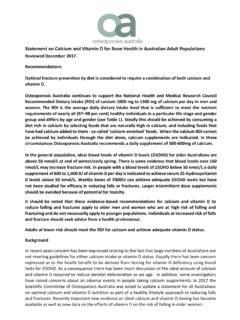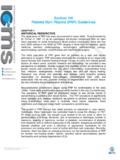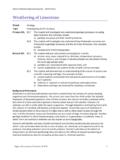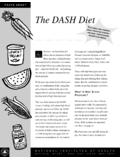Transcription of Your blood profiles explain - medicine at work
1 your blood profiles explained Because we know that many patients like to be given more information about the individual blood tests undertaken as part of their health assessment, and because patients are concerned when results which appear to be abnormal are dismissed without further explanation, we have written these notes to try to make up for any shortfall in the medical report which you will receive following your health check. If despite these notes, however, you would like any further information about your results, please do not hesitate to contact the physician who carried out the assessment. your own medical practitioner should also have received copies of your results and will be able to help explain them to you.
2 By convention the reference values, against which your own results are compared, are defined as being two standard deviations above and below the mean values for those particular results in a healthy population. Given that most biological results fall into a bell-shaped curve, this means that 5% of the results from normal healthy individuals, the two tails at either side of the curve, may be labelled as being abnormal merely because they happen to fall above or below the so-called reference values. Since each test is independent of the others, in a profile of more than 20 tests at least one abnormal result may be expected in two-thirds of perfectly healthy patients having these blood tests.
3 You must also appreciate that the results are influenced by age, diet, medication, and even the time of day and how the blood was drawn. It is the overall pattern of your results, normal and abnormal, taking into account your own clinical circumstances, which determines whether your particular results point to a health problem and need further investigation. Extreme values are more predictive than minimally abnormal ones, but a single extreme result in an otherwise normal pattern may well be ignorable. A set of blood results is very personal and a marked change in the result of a particular test, even within the reference range, when compared with previous results may be highly significant if it cannot be explained by changed clinical circumstances.
4 your own usual values are often far more relevant than the normal values of others. Cholesterol and triglycerides The association between raised blood cholesterol and the development of premature vascular disease is now firmly established. A raised blood cholesterol is, of course, only one of several factors predisposing to a heart attack or a stroke: cigarette smoking, raised blood pressure and the presence of diabetes are also important factors, as is your family history, but reducing your blood cholesterol is associated with a fall in the risk of your having a heart attack, whatever your medical circumstances, and whatever your initial blood cholesterol level. Cholesterol is an indispensable structural and metabolic component of all animal cells.
5 In the blood stream it does not circulate in its free state but is bound to particular proteins to form macromolecular complexes, the so-called low-density and high-density lipoproteins (LDL and HDL). It is raised levels of LDL-cholesterol which predispose to coronary heart disease, while in contrast the HDL particles appear to have a beneficial and protective function. In recent years the study of heart disease worldwide has led to a progressive reduction in the level of total cholesterol which is considered to be safe and the level now regarded by cardiologists as being desirable is < mmol/L (<154 mg/dL in the US). There is also increased scrutiny of the proportions of LDL and HDL in the blood and an LDL-cholesterol level consistently > mmol/L, or an HDL-cholesterol < mmol/L, ought to prompt a further review of your risk of having a heart attack.
6 You should note that regular exercise and a moderate alcohol consumption are known to raise HDL levels, whereas obesity and smoking lower them. Similarly, a diet rich in cholesterol and the saturated fats (animal fats and dairy products), and artificially hardened unsaturated vegetable fats, the so-called trans-fats, adversely affects the cholesterol profile , whereas the polyunsaturated fats and fish oils are more likely to improve the HDL/LDL balance. (NB: it is our practice to use random non-fasting blood samples for health screening purposes, but before any medical treatment is considered, with a statin, for example, blood taken after a 12-hour fast should be used to analyse the blood fats and lipoprotein concentrations.)
7 Triglycerides, similarly bound as lipid-protein complexes, are the principal circulating blood fats and their daily turnover greatly exceeds that of cholesterol. It is unclear, however, whether plasma triglycerides are themselves independent risk factors for coronary heart disease, but high fasting blood levels undoubtedly add to your vascular risk. Although not yet measured as part of this routine blood profile , there is now increasing interest being taken in the levels of the particular proteins which make up the lipoprotein complexes, and in other factors known to affect blood clotting and the risk of thrombosis, and specialist investigations in this regard may be undertaken if your risk of premature vascular disease is considered to be undue.
8 blood glucose Glucose, the body s essential fuel (and the only energy source available to the brain), is maintained within strict limits by a number of hormonal balances so as to ensure that the basic energy needs of the body are able to be met at all times. blood glucose rises after a carbohydrate meal, but should not rise above mmol/L (the level at which blood glucose is usually excreted by the kidneys into the urine). During fasting an adequate blood glucose level is maintained by the production of glucose from the breakdown of fat by the liver. A blood glucose above mmol/L, which is usually associated with the presence of glucose in the urine, may well be an indication of diabetes (inadequate insulin production by the pancreas) and demands further investigation.
9 An abnormally low blood glucose, in a patient alert and well when the blood was taken, is likely to be a technical artefact caused by a delay in the blood being analysed. In patients suspected of having diabetes, or to monitor blood glucose control in known diabetics, the additional haemoglobin A1c test may be arranged. HbA1c is a stable blood product which is formed at a rate that varies proportionately with blood glucose concentration and which may be used as an index of blood glucose control, and therefore of diabetic control, during the preceding 2-3 months. Thyroid function tests The thyroid gland, which produces the essential thyroid hormones responsible for metabolic control, is itself controlled by the master hormone regulator, the pituitary gland, by the release from the pituitary of a thyroid activator, thyroid stimulating hormone (TSH).
10 A change in thyroid gland activity, which may occur for a number of reasons, including in response to stress or because of a familial autoimmune illness, may be recognised by an increase or decrease in the level of TSH as the pituitary gland tries to correct for under- or overproduction of the thyroid hormones. If your TSH result is abnormal, we may have arranged for a specific measure of the principal thyroid hormone, thyroxine (free T4), so as to obtain confirmation of a thyroid imbalance. Slight degrees of thyroid imbalance are not uncommon, however, particularly at times of stress, and do not necessarily imply a need for further investigation or treatment.






